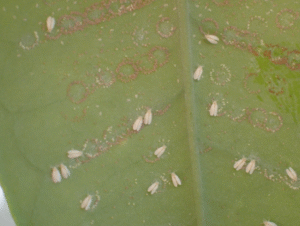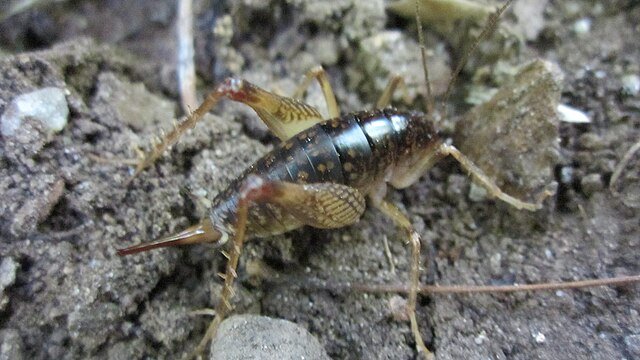Whiteflies (Aleyrodidae): Identification, Biology, and Effective Control
 Whiteflies are one of the most common and frustrating pests I encounter in greenhouses, gardens, and even indoor plants. These tiny sap-sucking insects from the family Aleyrodidae can multiply quickly, weaken plants, and spread diseases. Unlike aphids or thrips, which often stay hidden, whiteflies are easily spotted when disturbed—they rise in a small white cloud, like dust.
Whiteflies are one of the most common and frustrating pests I encounter in greenhouses, gardens, and even indoor plants. These tiny sap-sucking insects from the family Aleyrodidae can multiply quickly, weaken plants, and spread diseases. Unlike aphids or thrips, which often stay hidden, whiteflies are easily spotted when disturbed—they rise in a small white cloud, like dust.
I’ve treated hundreds of whitefly infestations, from home gardens to commercial tomato and cucumber facilities. The key lesson? Once you see them flying, the colony is already well established. Understanding how they live and what attracts them is essential for controlling them effectively.
Identification
Adult whiteflies are tiny—only about 1–2 millimeters long. They have soft bodies and are covered in a fine white, waxy powder that gives them their name. Their four wings are also coated with this powder, making them resemble tiny white moths.
Whiteflies usually rest on the underside of leaves, where they feed on plant sap using needle-like mouthparts. When disturbed, they fly in short bursts but quickly settle back on nearby leaves.
Common species include:
Greenhouse whitefly (Trialeurodes vaporariorum) – common in indoor crops and ornamental plants.
Silverleaf whitefly (Bemisia tabaci) – a major agricultural pest worldwide.
Citrus whitefly (Dialeurodes citri) – affects citrus and ornamental shrubs.
Biology and Ecology
Whiteflies have a rapid life cycle that makes control challenging.
Egg Stage: Females lay eggs in circular patterns on the underside of leaves. One female can lay up to 400 eggs in her short lifespan.
Nymphs (Crawlers): The first instar nymphs, called crawlers, move briefly to find a feeding spot. After that, they stay attached to the leaf and feed continuously.
Pupae: The later nymph stages look like tiny, flat scales.
Adults: Emerge from pupal cases after 3–4 weeks (faster in warm climates).
They thrive in temperatures between 22–30°C (72–86°F) and low air movement—conditions typical of greenhouses and indoor plant environments.
Global Distribution
Whiteflies occur worldwide, but severe infestations are more frequent in warm or tropical regions.
In Europe, Trialeurodes vaporariorum dominates greenhouse crops like tomatoes, peppers, and cucumbers.
In North America, both Bemisia tabaci and T. vaporariorum are common in agriculture and ornamental plants.
In Asia and Africa, Bemisia tabaci causes large-scale damage to cassava, cotton, and vegetables.
In Australia, whiteflies affect both urban gardens and commercial nurseries.
Their ability to adapt to indoor growing environments allows them to survive year-round, even in cold climates.
Risks and Damage
Whiteflies don’t just weaken plants—they create a chain reaction of damage:
Sap Removal: Continuous feeding drains nutrients, causing yellowing and leaf drop.
Honeydew Production: Their excretions form sticky droplets that attract ants and support sooty mold growth, reducing photosynthesis.
Virus Transmission: Some species, especially Bemisia tabaci, transmit plant viruses like Tomato yellow leaf curl virus (TYLCV) and Cassava mosaic virus.
Reduced Yield and Quality: Fruits and leaves become sticky, discolored, or mold-covered, making them unmarketable.
In greenhouse crops, a whitefly outbreak can reduce yields by 30–50% if not managed promptly.
Signs of Infestation
You can recognize a whitefly problem by:
Tiny white insects flying up when you touch the leaves.
Sticky residue (honeydew) on leaves or nearby surfaces.
Yellowing or curling leaves, especially on the lower part of the plant.
Black sooty mold developing on honeydew.
Slowed plant growth and lower fruit production.
A simple test: hold a yellow sticky card near the plants—whiteflies are attracted to yellow and will quickly get trapped, confirming their presence.
Control Methods
1. Cultural Control
Inspect new plants before introducing them indoors.
Remove infested leaves and destroy them immediately.
Vacuum adults early in the morning when they are slow-moving.
Encourage air circulation in greenhouses; whiteflies prefer still air.
Avoid over-fertilizing with nitrogen—it makes plant sap richer and more attractive.
2. Biological Control
Whiteflies have several natural enemies used successfully in integrated pest management (IPM):
Encarsia formosa, a tiny parasitic wasp that lays eggs inside whitefly pupae.
Eretmocerus eremicus, another parasitoid effective in warm climates.
Predators like lacewing larvae, lady beetles, and predatory mites.
These biological agents can keep populations low if introduced early and supported with proper environmental conditions.
3. Mechanical and Physical Controls
Use yellow sticky traps to monitor and reduce adult numbers.
Install insect-proof screens in greenhouse vents.
Apply reflective mulches outdoors to repel incoming adults.
4. Chemical Control
In severe infestations, chemical control may be necessary—but rotation and caution are key.
Use neem oil, horticultural soap, or insecticidal oils for small populations.
For heavy infestations, systemic insecticides (such as imidacloprid or acetamiprid) can help—but these should be applied by professionals and rotated to avoid resistance.
Always target the underside of leaves, where whiteflies live and feed.
Advanced Approaches and IPM
In commercial greenhouses, I usually recommend a combined approach:
Biological control as a base, using Encarsia formosa if possible.
Sticky traps to monitor populations.
Selective insecticides only when thresholds are exceeded.
Regular leaf inspections every 3–5 days.
Many farms now use computer vision systems that count insects on traps, allowing predictive control before outbreaks occur. This reduces pesticide use and cost while maintaining plant health.
Cultural and Historical Context
Whiteflies have troubled growers for centuries. The first descriptions date back to the 19th century, when outbreaks in greenhouses in England caused severe crop losses. The rise of indoor farming and global plant trade made them a worldwide issue.
Today, they’re one of the key pests studied in climate-controlled agriculture. Their rapid resistance to insecticides has made them a model species for pest management research. In fact, the Bemisia tabaci complex now includes over 40 genetically distinct biotypes adapted to different crops and climates.
FAQs About Whiteflies
Q1: Do whiteflies bite humans?
No. Whiteflies feed only on plant sap and don’t bite humans or animals.
Q2: How can I get rid of whiteflies naturally?
Use yellow sticky traps, neem oil sprays, or introduce beneficial insects like Encarsia formosa or lacewings.
Q3: Can whiteflies survive winter?
Outdoors, they usually die off in cold weather. Indoors or in greenhouses, they can survive year-round.
Q4: Are whiteflies and aphids the same?
No. Both suck sap, but aphids are larger, more pear-shaped, and produce more honeydew.
Q5: Do whiteflies spread plant diseases?
Yes. Especially Bemisia tabaci, which transmits several plant viruses, including Tomato yellow leaf curl and Cotton leaf curl virus.
Q6: What’s the fastest way to eliminate whiteflies?
Combine cleaning, yellow traps, neem oil sprays, and introduce natural predators. If the infestation is heavy, use a professional pest-control treatment for rapid results.
Final Thoughts
Whiteflies (Aleyrodidae) may look delicate, but they’re among the most persistent and damaging pests for both home gardeners and commercial growers. In my experience, infestations often start unnoticed on a single ornamental plant and quickly spread to entire greenhouses or vegetable crops.
The good news is that whiteflies can be controlled effectively with early detection and integrated pest management (IPM). Always start with inspection—look under leaves for eggs and nymphs, not just flying adults. Use sticky traps, airflow, and biological control agents before reaching for chemical solutions. If you must use insecticides, rotate active ingredients to prevent resistance.
Healthy plants, proper hygiene, and consistent monitoring are your best defenses. Remember, once whiteflies are under control, regular maintenance is what keeps them from coming back.
Disclaimer
This article is for informational purposes only. Pest control laws and approved chemicals vary by country. For best results and legal safety, we strongly recommend contacting a licensed pest control professional in your local area. Always make sure that the pest control technician is properly certified or licensed, depending on your country’s regulations. It’s important to confirm that they only use approved products and apply them exactly as instructed on the product label. In most places in Europe, UK, or USA, following label directions is not just best practice—it’s the law.
Author
Nasos Iliopoulos
BSc Agronomist & Certified Pest Control Expert
Scientific Director – Advance Services (Athens, Greece)
Licensed Pest Control Business – Ministry of Rural Development & Food (GR)
References
University of Maryland - Whiteflies - Vegetables

